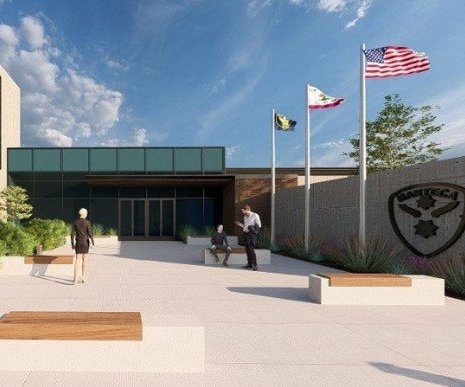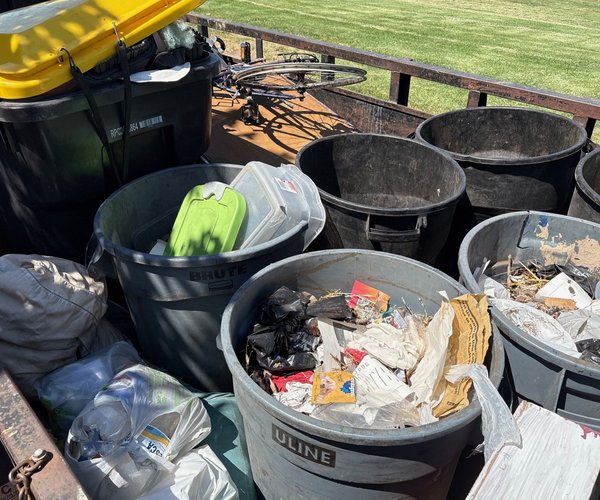Mike Barkley believes the City of Manteca has an obligation to lay all of the cards on the table when it comes to the general plan update.
The card is one that Mother Nature played in 1862. It is one that hydrologists and climatologists believe will be played again.
It involves the well-documented 43 consecutive days of rain that took place between November 1861 and February 1862 that flooded almost the entire Central Valley with many spots in then developed Stockton and Sacramento reported with as much as 10 feet of water.
On top of that, the eventual Sierra snowpack runoff meant many parts of the valley remained flooded well into spring.
It is why Barkley — a longtime Manteca resident who unsuccessfully ran against Tim McClintock in the Nov. 8 election for the Fifth District Congressional seat representing much of Modesto and Turlock as well as a vast swath of the Sierra — wants specific language inserted into the city’s general plan update.
The general plan is a state mandated document that serves as blueprints to guide the growth of cities.
Barkley’s proposal would require anyone taking out a building permit in the City of Manteca to be given a notice that reads, “Until such time as the spillway capacity of New Melones Dam is increased sufficiently to handle the flooding flows of 1861-62 or the risk is disproven, there is a risk that New Melones Dam will wash out and your Manteca property modifications may be swept away by the subsequent flood.”
Barkley justifies the need for such language based on modeling from research of the 1862 flood event that indicated flows at what is now the New Melones Dam site on the Stanislaus River twice in January 1862 exceeded 280,000 cubic feet per second (cfs).
The dam was built with only 128,000 cfs of bypass capacity.
There is also data that points to risks on the Stanislaus River where flow was sufficient in seven different rainy seasons over the past 1,800 years to overtop the dam and wash it out.
The Stanislaus River joins the San Joaquin River 10 miles south of Manteca.
The $270.7 million 200-year-flood protection upgrades that are moving forward to protect Lathrop as well as parts of Manteca and Stockton is a level of protection inadequate to address what a breach of New Melones could do.
There have been flood maps circulated that show such a catastrophe would be regarded as a 500-year event with almost all of Manteca being at least several feet underwater.
In flood lingo a 200-year event doesn’t mean a flood that will happen every 200 years. Instead, it reflects the odds of such an event happening in any given year. That means there is a 1 in 200 chance of an event occurring in any given year requiring the levee work now being pursued.
The odds are 1 in 500 of an event Barkley is concerned about has the chance of happening in any given year.
In submitting his comment to the city, Barkley stated, “understand . . . I have not proven or disproven the risk by an appropriate engineering study.”
But until such a study that the 1862 event would seem to justify is completed, Barkley believes the city has an obligation to warn existing and future residents until the New Melons bypass deficiency is addressed or proven not to be a risk.
An exact hydrology repeat of the 1862 event could be tempered somewhat by the series of dams that now exist and didn’t back 160 years ago although that would require release management in a timely enough manner to avoid dams being breached and collapsing.
Nature, left on its own, would assure virtually every square — of the heart of the Central Valley — San Joaquin, Sacramento, and Stanislaus counties and beyond — would be in a 200-year flood plain.
That’s not conjecture. The well-documented Great Flood in 1861-62 covered 300 miles of the Central Valley at a width of 20 miles. Everything near the Delta where Manteca, Stockton, Tracy, Lathrop, Ripon, and Lathrop are today was completely covered with water. In some spots accounts indicate it was as deep as 30 feet.
What happened in 1861-62 was a larger version of the events that led to the last flood in the Manteca area back in 1992. There had been unusually early heavy snowfall in the Sierra in December. It was punctuated with periods of heavy warm rain in late December and January that triggered a massive snowmelt.
The 1992 event flooded 70 square miles of rural Manteca and Tracy on either side of the San Joaquin River. It forced the evacuation of 2,000 residents, damaged 700 structures, and caused losses pushing $100 million.
There were locations in 1862 the Sierra where rainfall reached 98.43 inches. That is seven times Manteca’s average annual rainfall.
By one account, “Four thousand people lost their lives, one-third of the state’s property was destroyed, a quarter of California’s cattle population drowned or starved, and one in eight homes were a complete loss by floodwaters.”
To contact Dennis Wyatt, email dwyatt@mantecabulletin.com









